As a beginner piano player, do you need to practice contrary motion scales? The answer is yes! I’m going to show you why they’ll improve your hand independence and technique, making you a better piano player right away.
Want to learn more about music theory? Learn why scales are important and the difference between major and minor scales.
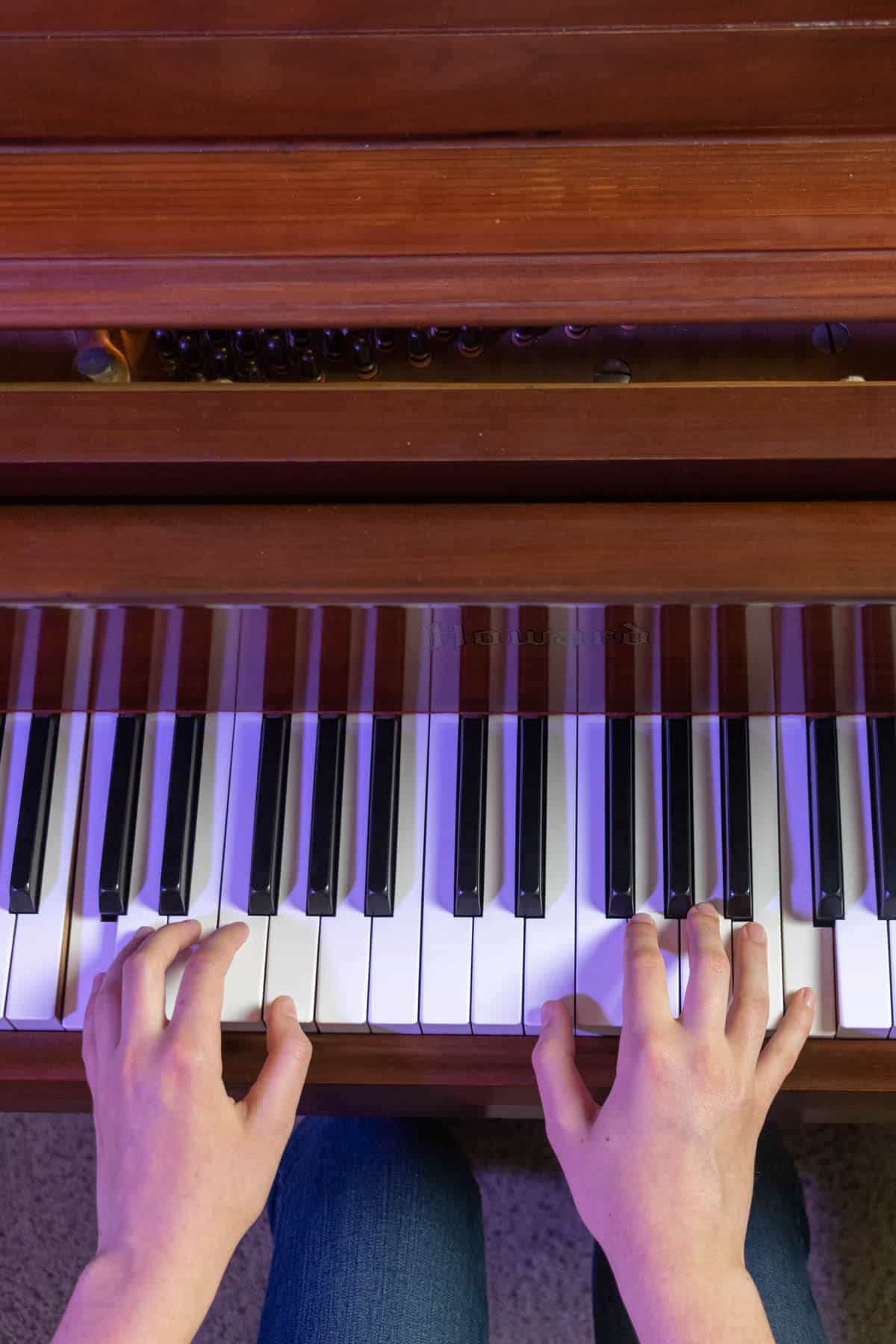
About
What does a contrary motion scale look like?
First, we need to understand what parallel motion means. If you remember from geometry class, parallel lines travel in the same direction, but never intersect. Parallel motion scales travel in the same direction, but your two hands won’t run into each other.
Contrary motion basically is the reverse. Your hands will start on the tonic note of the scale, then move away from each other until you reach the tonic note again, then you’ll come back together. Your hands are moving contrary, or opposite, to each other—like a mirror image.
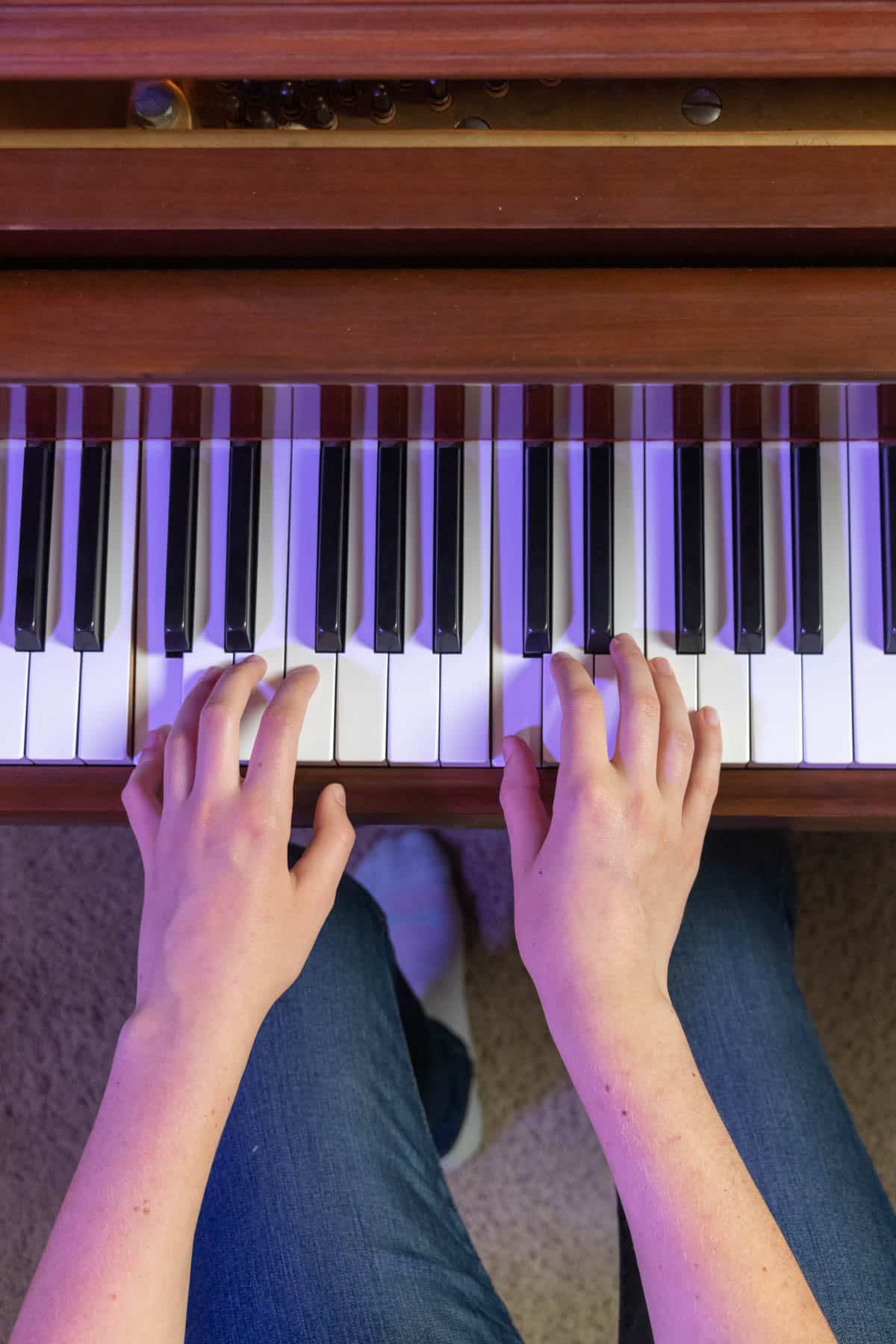
Why It's Important
Contrary motion scales look complicated and sound kind of weird. Does that mean they are a waste of time to learn? Absolutely not!
In fact, if you’re a beginner pianist, you should start learning this type of scales first. They’re a little easier to understand than a parallel motion scale because you’re crossing or tucking your fingers at the same time in both hands.
In addition, this type of scale improves your technique in powerful ways. By playing different notes with each hand, you’ll get a chance to clearly hear the notes that each hand is playing, which will improve your hand independence. Tucking your fingers with both hands and moving in different directions will take your coordination to new heights, not to mention helping you understand the scale a lot more thoroughly.
Pentascale
Ready to gain the benefits of practicing contrary motion scales? Let’s jump in with the easiest one: the pentascale, or five-finger scale.
To play a C major pentascale, place your right hand on the piano in the standard five finger position. (Finger 1 on middle C, finger 2 on D, finger 3 on E, finger 4 on F, and finger 5 on G.)
Start by playing middle C, then play each note until you get up to G, then play each note back down to middle C. Repeat a few times to get your fingers warmed up, and try it in your left hand on the low C.
If we want to play this in contrary motion, our left and right hands will need to start on the same note and move away from each other. Place both thumbs on middle C, then slowly work your way outwards until you hit your outside fingers. Now, come back in until both thumbs are back on C.
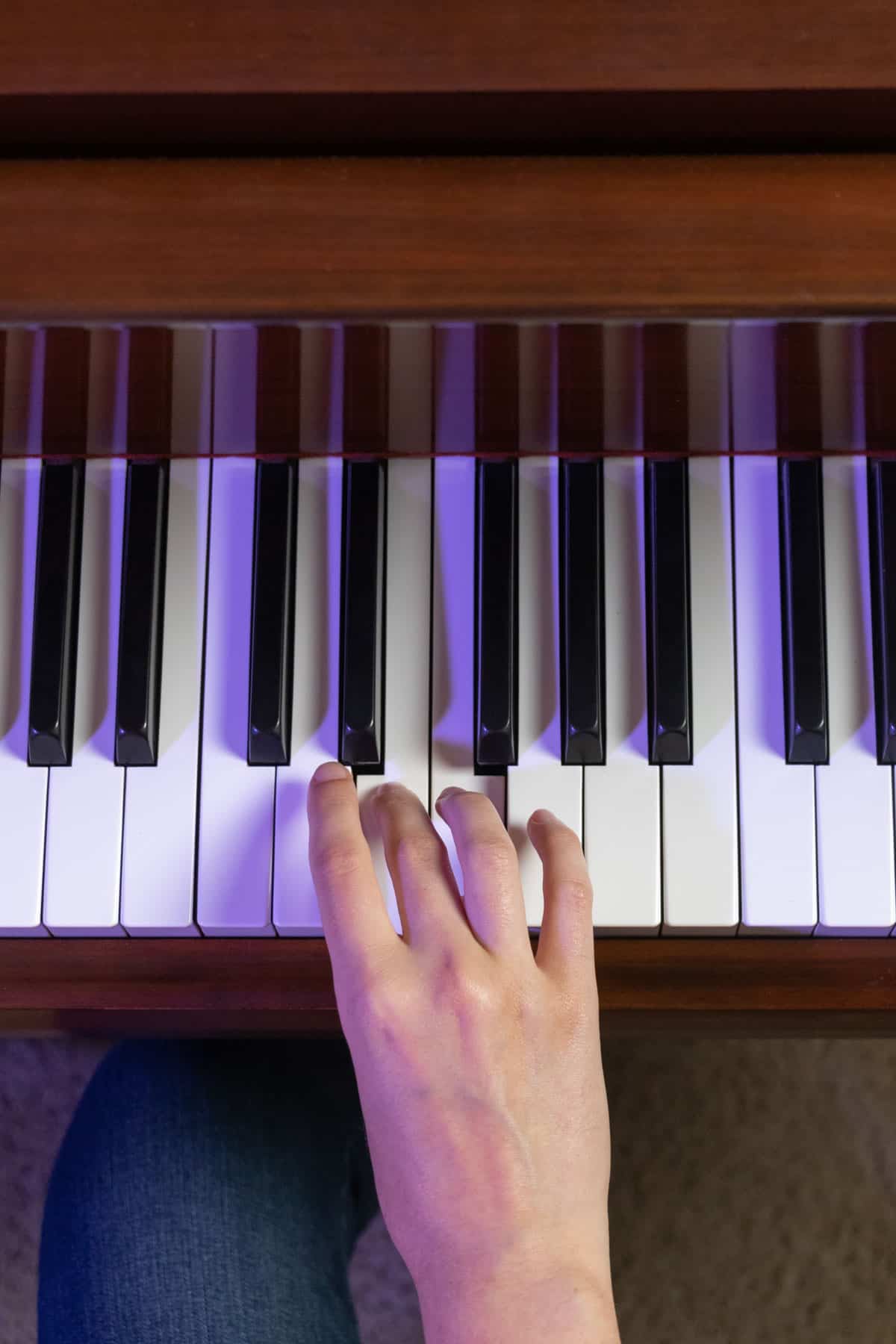
One Octave
Now that you’ve got the contrary motion pentascale under your belt, are you ready for something more challenging? Let’s take a C major scale and play it in contrary motion for 1 octave.
Start with your thumbs on middle C, just like you did with the pentascale. Play with finger 2 in both hands, then finger 3.
Now, tuck your thumbs under onto F (RH) and G (LH) to reset your position. That frees up fingers 2 through 5 to play the rest of the notes.
Play with fingers 2, 3, 4, and 5. Both of your 5th fingers should be on C. That means it’s time to start coming back together.
Play with fingers 4, 3, 2, and 1, then bring finger 3 over to play the next note. This frees up fingers 2 and 1 to finish off the scale.
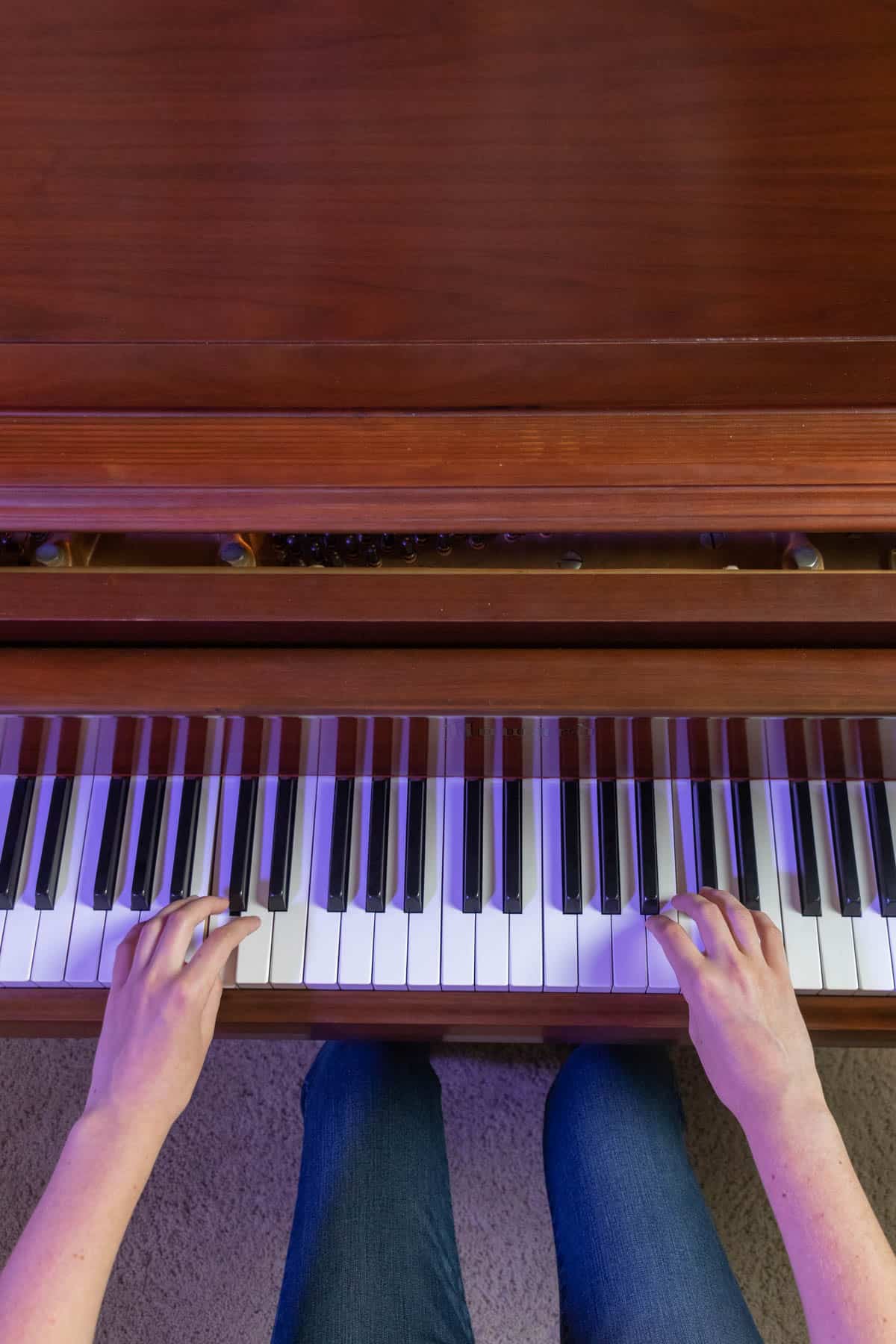
Two Octaves
What if we want to cover two octaves with each hand instead of one? There’s one simple adjustment to make.
For a one-octave scale, you’d play finger 5 on the top note with each hand. If you want to do two octaves, you’ll have to tuck your thumb there instead of using the fifth finger. Then, continue with the normal fingering for the rest of the way out.
When you come back in, play the first octave as you normally would until you hit the C. Then, you’ll need to cross your fourth fingers over. When you get back to your thumbs, cross over your third fingers to take you to middle C.
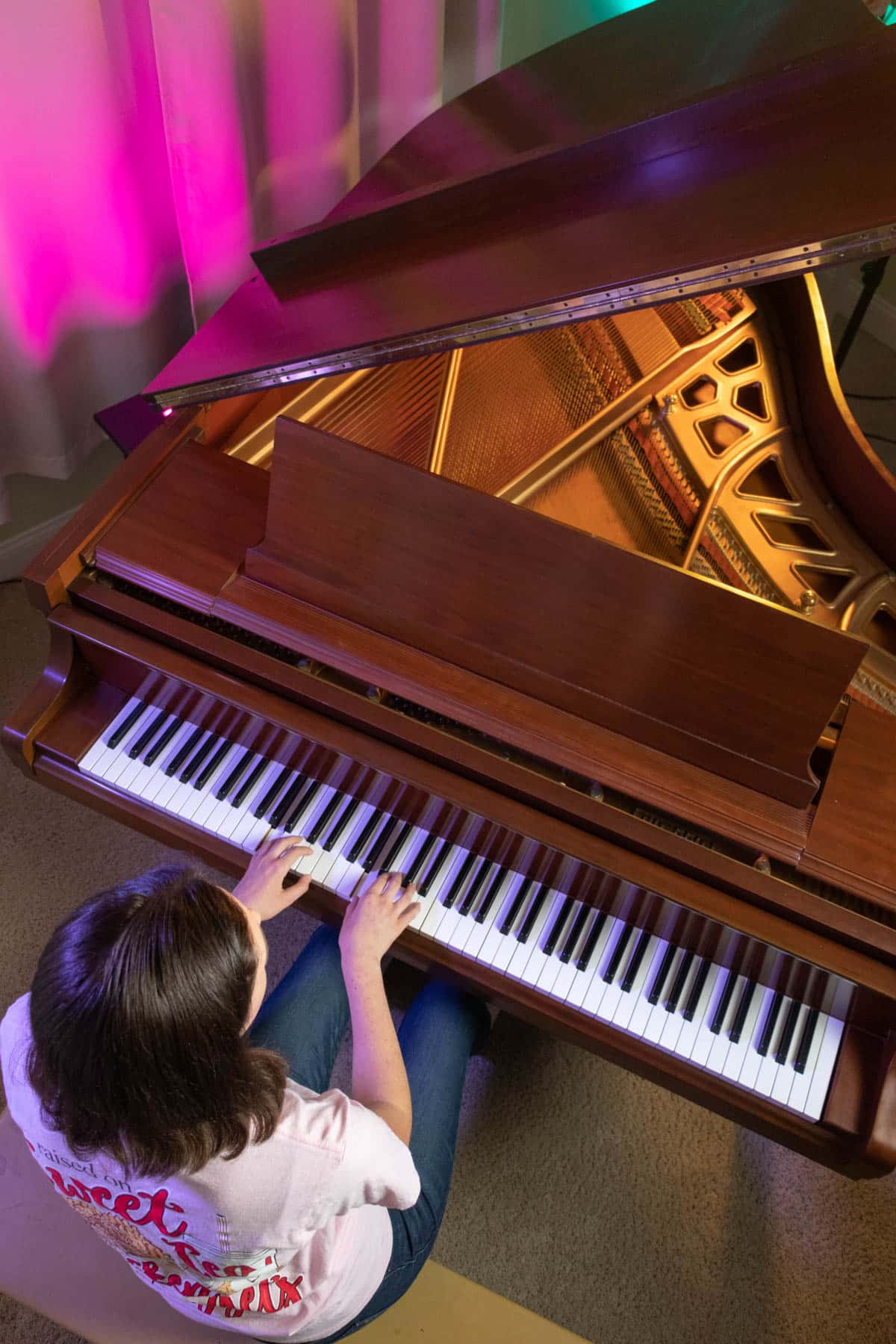
Tips
What about practicing contrary motion scales? How do you learn them without getting confused? Let’s talk about how to do that!
Start by going really slowly. There’s a lot of information to process when learning a scale, so stick to a slow tempo until you’ve got the pattern.
Practice hands separately at first. This is especially helpful when you learn more complicated key signatures with sharps and flats. Once you can play the left hand and right hand parts independently, it’ll be much easier to play them together.
Challenge yourself with new key signatures. Once you’ve learned C major, try G major or F major next. G major has one sharp, F sharp, and F major has one flat, B flat. Gradually work through the twelve major and twelve minor keys until you know them all.
FAQs
Start slowly, and play hands separately at first. If you're new to piano, play the right hand part 3 times, the left hand part 3 times, then try it hands together 3 times. Make sure you're using the correct fingering in each hand. Gradually speed up as you become more confident playing the scale. Once you've mastered the scale, move on to a new key signature.
Similar motion in piano means that your hands are moving in the same direction, but they may be moving by different intervals (i.e. a third in the right hand and a fifth in the left). Parallel motion means that your hands are moving in the same direction, and by the same interval (i.e. a half step in each hand).
Contrary motion means that your hands are moving in opposite directions. When you're playing a contrary motion scale, that means you'll be playing the same note in each hand. Your hands will move away from each other until you reach the tonic note in each hand, then you'll come back together until you reach the tonic in the middle.
Conclusion
Now that you know how important contrary motion scales are, I hope you’ll practice them consistently. As a beginner pianist, you’ll see lots of amazing improvements to your hand independence and piano technique.
Other Piano Articles You'll Love
You must use the category slug, not a URL, in the category field.Follow Emma Blair Piano on Pinterest, Instagram, Facebook, Twitter, and YouTube!
If you enjoyed this post or found it helpful, please leave a comment below. You'll make my day!
Video
Prefer to watch this information instead? Watch the video below to learn why you should practice these scales on the piano.






Kiki Mann
In the one octave section, you start with both hands playing. Then after the 3rd fingers play you say "Now, tuck your thumbs under onto F to reset your position" F is correct for the right hand, but in the left hand the thumb tucks under onto G.
Emma
Thanks for pointing out that type, Kiki! I'll fix that.